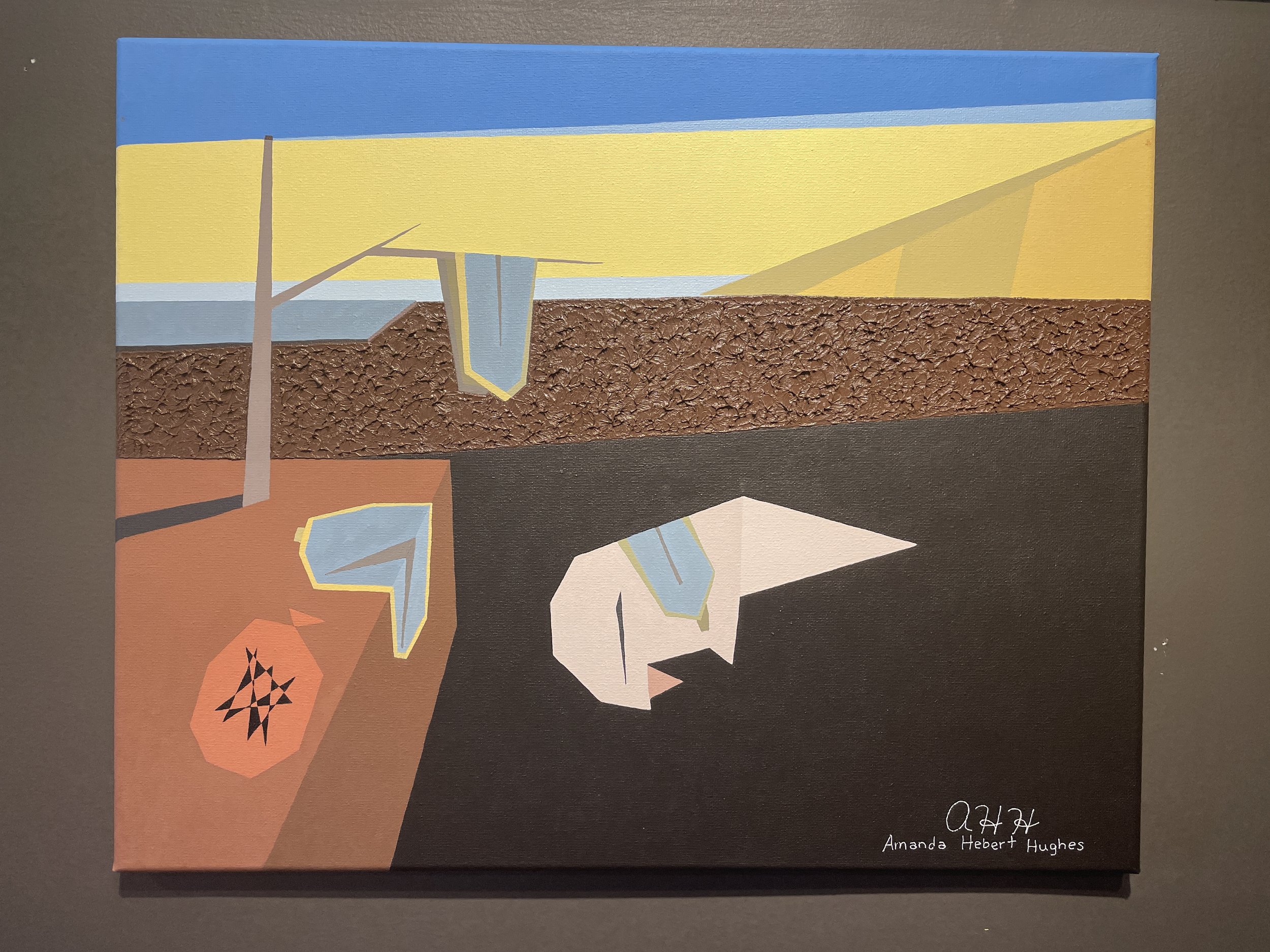Leveraging color, line, texture, and psychology to deliver a calming and accessible new genre to the world of art and design.
What is Sensory Gating?
Sensory Gating is a cognitive process that must take place in the brain to filter information as taken in through the 5 senses.
Its main job is: to filter the important information from the unimportant information.
This is cognitive work that every brain must do.
How does Sensory Gated Art work?
SENSORY GATED ART INTEGRATES VISUAL INFORMATION FOR THE BRAIN - RESULTING IN A CALMING EFFECT.
Clean lines.
Clean lines establish clear boundaries. Boundaries are universally associated with safety, order, and security - from microbiology to the cosmos.
Straight lines.
Straight lines and consistent curves establish predictability. Predictability is universally associated with comfort- not demanding readiness for the unexpected also associated with fight or flight response.
Cohesive colors.
Color is information. Cohesive colors come from the same palette providing overlap. This provides a logical relationship for the brain as it processes this visual information. These are small stepping stones that connect the dots for the brain and provide harmony.
Enriching textures.
Rich texture blocks are a signature token to Sensory Gated Art. They bring the sensory process to the next level while also providing an accessible resting place for the eye as it travels across the piece.
“To experience multi-sensory integration, we must be exposed to experiences that feed all of our senses. Despite being a visual discipline, Sensory Gated Art utilizes color, texture, proportionality, and tone to create a simulated experience across all sensory modalities, where the roughness of the branches on canvas are almost perceptible on our hands and skin.”
Praise
-Sophie Schuller, architectural neurophysiology PhD student at the Technical university of Eindhoven Sophie Schuller - Researcher
“At Aspiritech, we are very conscientious about our sensory needs for our autistic team members. We have a sensory room with soft lighting, massagers, fidgets, weighted blankets, grounding techniques and more to help anyone who may need to address their sensory needs in the workplace. We're proud to have this space, but Amanda has opened up our eyes to how we need to think about sensory needs throughout our entire environment.
Meeting Amanda Hebert Hughes opened my mind to thinking about sensory needs in a completely new way. Her art has brought a calm to my home (with four neurodivergent children and at least one neurodivergent adult) that has washed over us all. We're hoping to use her expertise in the Aspiritech office as well and expand her impact.
Sensory Gated Art is changing lives.”
-Tara May, CEO of Aspiritech, Forbes Business Council Member Tara May | CEO - Aspiritech | Forbes Councils
“Amanda’s work is something that combines the geometric and intricate line-work of Mondrian with the textures of the impressionists. The comparison between smooth and textured creates something that the viewer wants to keep diving into. Her thoughtful use of color and the flow of geometric shapes provide the viewer with a sense of calmness as they move through each particular piece. Definitely something to experience first-hand.”
-Matthew Decker Owner, Founder of M.H. Decker Fine Art L.L.C
“The art of Amanda Hebert Hughes is immediately recognizable for its clean lines and rich texture. Each carefully selected color evokes a specific emotion. Like good literature, the work of Amanda Hebert Hughes is not meant to be merely seen but interacted with. You come away different than you were before the encounter. I am pleased to own several pieces and look forward to adding more to my collection in the future.”
-A. B. Donahue, Publisher, Bandersnatch Books
“In the development of every piece, something special happens: that once-in-forever moment when a one-of-a-kind has been created.”
-Amanda Hebert Hughes





